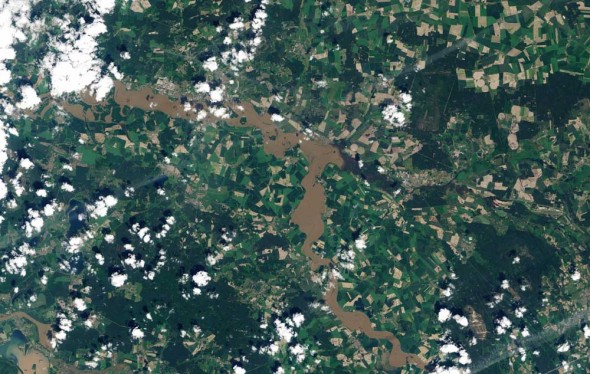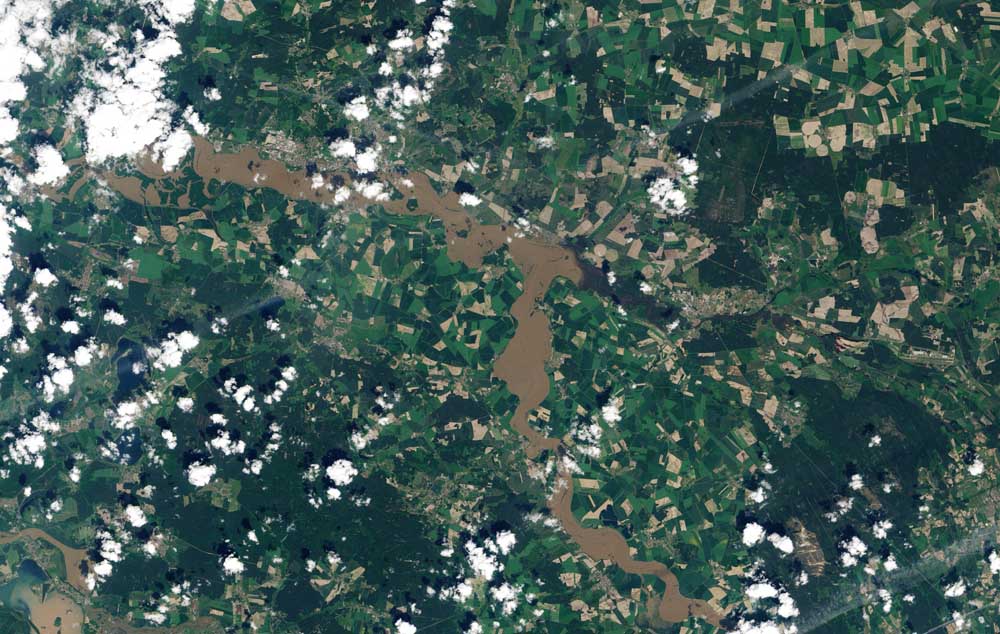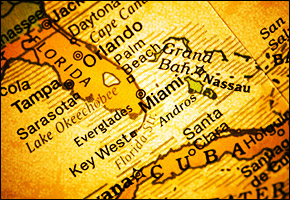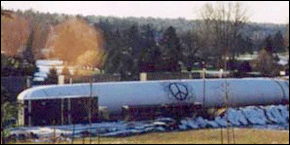Central Europe: Flood Defenses and Responses Yield Mixed Results
The second bout of massive flooding in little more than a decade reveals Europe’s patchwork progress on flood risk management.

Weeks of widespread flooding in Central Europe’s Danube and Elbe River Basins put the region’s flood defenses and disaster risk management plans to the test just 11 years after the deadly floods of 2002. While fewer deaths and improved protection of city centers are signs of progress, the economic costs of the disaster suggest that current plans remain insufficient.
Floodwaters in some areas reached their highest levels in 500 years, spurring evacuations and halting public transportation. Damage, however, was largely avoided in major cities like Budapest, despite record high water levels. In central Prague and Dresden, Germany—both of which suffered major losses in 2002—flood levels did not quite reach the peaks observed in 2002, and flood defenses prevented extensive damage.
More than 3 million sandbags were deployed in defense of Dresden, while Prague shut down its metro system and sewage treatment plant, and even evacuated zoo animals. Hungary used almost 10.2 million sandbags to fight the floods, and the government attributed its success to the coordination between volunteers and national agencies. German authorities used satellite data from the European Space Agency to map flood-affected areas and improve emergency response. The overall death toll from the floods is just one fifth of what it was in 2002—22 compared to 110.
–Lukáš Kantor,
Press Officer,
Government of the Czech Republic
Still, economic losses could total nearly $US 16 billion in Germany with insured losses of $US 4 billion, according to Fitch Ratings—a 130 percent increase from 2002. Other estimates put the bill even higher. Costs in the Czech Republic, however, could be 50 percent less than in 2002 at $US 1.5 billion, according to estimates from the Erste Group Bank obtained by The Prague Post.
“It is estimated that the floods in 2002 caused much more material damage and they also claimed more lives,” Lukáš Kantor, press officer for the Government of the Czech Republic, wrote in a statement to Circle of Blue. “Generally speaking, today, the people involved are more experienced, better prepared and equipped with more sophisticated techniques. For instance, the Czech Hydrometeorological Institute has a modeling system for predicting floods, which is now more modern and automated. At the same time, the system [uses] more measuring stations. ”
Kantor added that preventive measures, such as professional training provided to mayors and other officials and instructional lessons held at schools, helped the country better manage the floods.
Increasing Risk
Central Europe is no stranger to flooding—even two record-setting floods in 11 years. Other large floods occurred in the region in 1997, 2005 and 2010, many produced by Genoa Low cyclones forming and intensifying over the Mediterranean and Adriatic Seas.
“It’s hard to call it unusual or unexpected,” European Commission spokesperson Irina Novakova wrote in a statement to Circle of Blue. “If hydrologists speak about a 100 year flood, there is a 1 in 100 (0.01) chance that a flood of a certain magnitude occurs. This means, however, that there is a 0.01 chance that a flood of a certain magnitude occurs every day. Another question, of course, is whether climate change has changed or will change the weather patterns.”
–Irina Novakova,
Spokesperson,
European Commission
A report released June 5 by the European Environment Agency predicts that weather patterns will change, stating that “rising temperatures in Europe will intensify the hydrological cycle, leading to more frequent and intense floods in many regions.”
The report adds that land use change and population growth are major factors leading to an increase in the damages caused by natural disasters.
More Work to Do
The numerous studies and risk reports point to a more disaster-prone future for Europe have prompted the European Commission to increase its focus on disaster management, as well as climate change adaptation. The European Union’s legislative body has developed initiatives that primarily focus on increasing knowledge about disasters, determining best practices, and encouraging risk assessment and mapping, Novakova said.
“We are working with our Member States to produce a better understanding of the risks that we face,” she said. “It is only once we have a clear understanding of risk that national and local authorities will be able to develop the strategic, cross-sector plans that are the basis of successful disaster management.”
One program, the Floods Directive adopted in 2007, requires all EU member states to prepare flood-risk reduction plans—including identification of floodable areas and the populations and economic activities at risk—but will not be fully implemented until 2015. The states must create flood hazard maps this year, and their first Flood Risk Management Plans in 2015, Novakova said.
Sources: European Environment Agency; Fitch Ratings; Hungarian Government; The Prague Post; Risk Management Solutions
A news correspondent for Circle of Blue based out of Hawaii. She writes The Stream, Circle of Blue’s daily digest of international water news trends. Her interests include food security, ecology and the Great Lakes.
Contact Codi Kozacek










Leave a Reply
Want to join the discussion?Feel free to contribute!